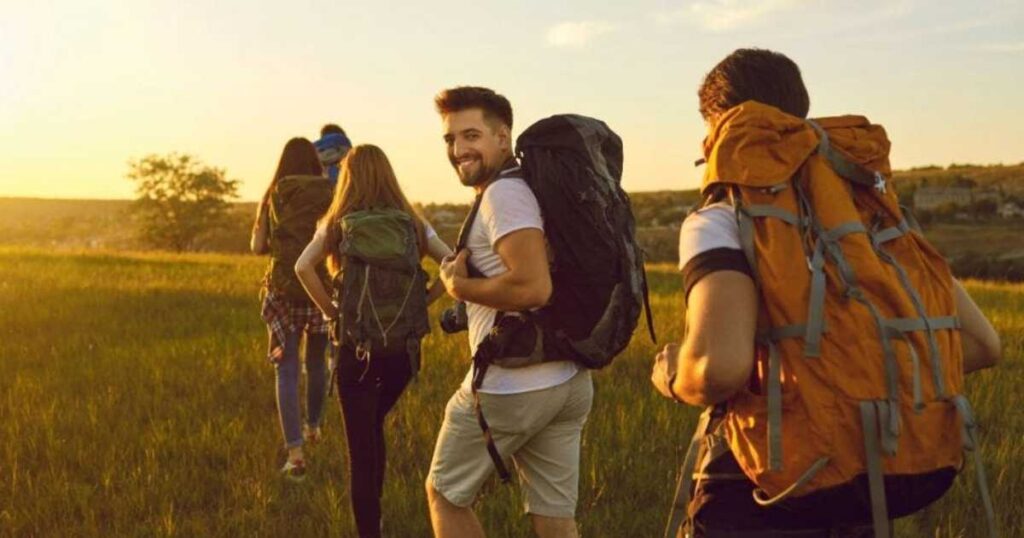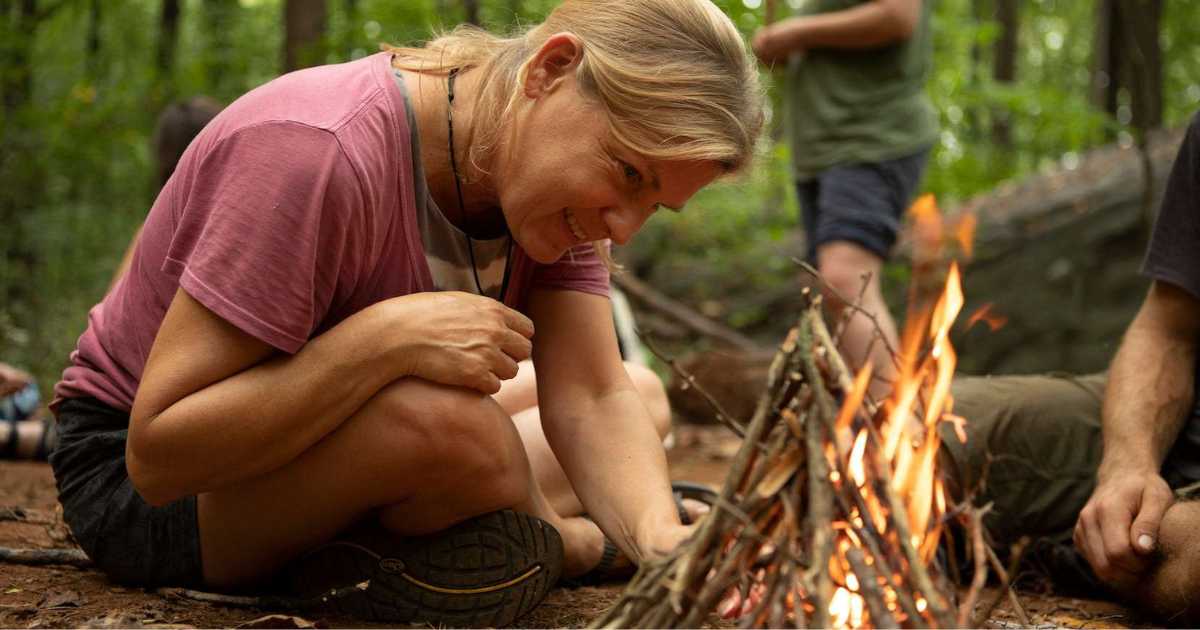The BlueFire Wilderness lawsuit is a big legal fight about a youth therapy program. Some people say BlueFire hurts kids instead of helping them. This case is making everyone think hard about wilderness therapy. It’s asking if these programs are safe and honest.
What if you tried to help your child but put them in harm’s way? That’s what this lawsuit is about. It’s a scary thought for parents. Now, lots of people are looking closely at Wilderness therapy programs. They want to know what really happens there.
This story digs into the problems with BlueFire Wilderness. We’ll look at what people say went wrong. We’ll see how it might change therapy for troubled teens. It’s not a simple issue, but it’s important. We need to figure out how to keep kids safe while still trying new ways to help them.
Background on Wilderness Therapy
Wilderness therapy has gained a lot of attention recently, offering hope to families with troubled youth. It’s like sending your kid to summer camp, but with therapy included. These programs combine outdoor activities with counseling to help teens and young adults deal with emotional and behavioral issues. Instead of sitting in an office, participants hike, learn survival skills, and have group therapy sessions outside.
It’s not all fun and games. Some people praise wilderness therapy for changing lives, while others worry about its safety and effectiveness. There are stories of success, but also stories of abuse and neglect. BlueFire Wilderness is one such program that’s now facing serious legal challenges.
Overview of BlueFire Wilderness Therapy

BlueFire Wilderness isn’t just a regular summer camp. Located in Idaho’s tough landscapes, this program aims to help teens and young adults with issues like depression and substance abuse. They combine outdoor activities like rock climbing and white-water rafting with therapy sessions led by licensed professionals. The idea is to mix adventure with healing.
Things aren’t so simple. BlueFire, like other wilderness programs, advertises itself as a life-changing experience, promising to turn troubled teens into confident, well-adjusted people. But the reality hasn’t always lived up to these promises. Some families, feeling let down, have sparked a legal battle that’s shaking up the industry.
Key Legal Issues in the BlueFire Wilderness Lawsuit
The BlueFire Wilderness lawsuit highlights serious legal issues and raises concerns about how wilderness therapy programs operate. The main issues include claims of abuse, lack of medical care, misleading promises, and problems with regulations.
Allegations of Abuse and Negligence
The BlueFire Wilderness lawsuit is more than just unhappy clients. It’s a serious issue that has shaken the wilderness therapy industry. Former participants and their families have made disturbing claims. They talk about physical and verbal abuse, harsh punishments, and emotional manipulation. One participant said they were forced to hike for hours without enough water, while another mentioned staff using fear to make them follow the rules.
Inadequate Medical Care
When you’re far from help, even a twisted ankle can be a big problem. The lawsuit against BlueFire includes claims that participants didn’t get proper medical care. Some say they didn’t receive treatment for injuries or illnesses on time, while others feel their mental health needs were ignored. In one serious case, a teen got a severe infection that wasn’t treated for days, leading to hospitalization.
Providing medical care in remote areas is tough, but it’s a vital duty for any wilderness therapy program. The lawsuit claims BlueFire didn’t fulfill this duty, putting participants at risk. This has led to a debate about the level of medical support these programs should offer and if they can handle the complex health needs of troubled teens.
Misrepresentation and Fraud
When parents are desperate to help their child, promises of a quick fix can seem very appealing. The BlueFire lawsuit says the program lied about their success rates and hid the risks. Families say they were told the program would definitely fix their child’s problems but were disappointed with the results.
This brings up important questions about how these programs are marketed. What can they honestly promise? What success rates are realistic? The lawsuit claims that BlueFire went too far, making promises they couldn’t keep, which left families feeling cheated and out of money.
Regulatory and Licensing Issues
Here’s where things get complicated. The wilderness therapy industry is like a regulatory “Wild West.” In many states, including Idaho where BlueFire operates, there isn’t much oversight. The lawsuit claims BlueFire took advantage of this by operating without the right licenses and not meeting basic care standards.
This lawsuit could have a big impact on the whole industry. It’s highlighting the need for stronger rules and oversight to protect vulnerable youth. As the case continues, it might lead to major changes in how wilderness programs are licensed and monitored.
Also Read This Blog: Get Ready Bell: Client Pulse
Ethical Considerations in Wilderness Therapy
Wilderness therapy programs aim to help troubled youth, but they raise important ethical questions. These issues include how participants are treated, informed consent, coercion, and the impact on participants and their families.
Ethical Treatment of Participants
A big question in wilderness therapy is what ethical treatment means. These programs often push participants to face challenges to help them grow. It’s important to know where the line is between a helpful challenge and something harmful. The BlueFire lawsuit claims that the program used methods that caused more harm than good. This raises concerns about how to keep youth safe while offering these experiences.
Informed Consent
Informed consent means that parents understand what their child will experience in wilderness therapy. This is crucial in any treatment, but it’s complicated in these programs. The BlueFire lawsuit argues that parents were not given all the information about the risks involved. This leads to questions about how honest these programs are and what details should be shared with families before enrollment.
Coercion and Voluntary Participation
Some programs use a practice called “gooning,” where teens are taken to the program against their will. This raises ethical concerns about forcing teens into these programs. The BlueFire lawsuit highlights these issues and encourages discussions about balancing parental rights with youth independence and the ethics of involuntary treatment.
Impact on Participants and Families
The effects of wilderness therapy can last a long time for both participants and their families. The BlueFire lawsuit shows a mix of outcomes, from positive changes to lasting trauma. This emphasizes the risks involved in choosing these programs. It also sparks conversations about how to evaluate the success of wilderness therapy and support participants and their families after the experience.
Long-Term Effects on Families
The impact of wilderness therapy doesn’t end when a participant comes home. For many families, it’s just the beginning of a long journey. The BlueFire lawsuit has shed light on the complex aftermath of these programs, including financial strain, changing family dynamics, and ongoing mental health challenges. Some parents report feeling guilty or conflicted about their decision to send their child to wilderness therapy, especially in light of negative experiences.
On the flip side, there are families who say the program was a turning point, leading to improved relationships and better outcomes for their child. This range of experiences highlights the need for better follow-up care and support systems for families post-program. The lawsuit is pushing the industry to consider its responsibility to participants and families beyond the wilderness experience itself.
Legal Precedents and Industry Implications
The BlueFire Wilderness lawsuit is affecting the entire wilderness therapy industry. It raises important issues that could change how programs operate. This section discusses how the lawsuit influences industry standards, calls for more regulation, and impacts public perception.
Influence on Industry Standards
The BlueFire Wilderness lawsuit isn’t just about one program, it’s sending shockwaves through the entire wilderness therapy industry. As details of the case emerge, other programs are taking note, reassessing their own practices to avoid similar legal challenges. This could lead to a significant overhaul of industry standards, from staff training to safety protocols.
We’re already seeing changes. Some programs are beefing up their medical support, while others are revamping their marketing materials to be more transparent about potential risks. The lawsuit is acting as a wake up call, pushing the industry to address long-standing concerns about safety and effectiveness.
Calls for Regulation and Oversight
The BlueFire case has increased calls for stricter rules in the wilderness therapy industry. Advocates want better licensing requirements, regular checks, and clearer guidelines for how programs operate. Some even want federal oversight, saying that state regulations alone are not enough to keep participants safe.
This push for regulation is gaining support, with lawmakers in several states looking at bills to improve oversight of wilderness programs. The challenge is finding a balance: how can we ensure safety without limiting the unique benefits these programs provide? As the lawsuit continues, it will likely influence regulations for years to come.
Impact on Public Perception
The BlueFire Wilderness lawsuit has put wilderness therapy in the spotlight, and not in a good way. Media reports show the industry as risky and lacking accountability. This change in how people see wilderness therapy could affect programs all over the country.
Many families now have doubts about the safety and effectiveness of wilderness therapy. Programs are seeing fewer enrollments as parents worry about potential dangers. At the same time, the controversy has led to important discussions about mental health treatment for teens and the role of alternative therapies. As the case continues, it will likely influence public opinion and how families choose treatment options for troubled youth.
Final Thoughts
The BlueFire Wilderness lawsuit is a big wake-up call for everyone involved in helping troubled teens. It shows us that even when we try to do good, things can go wrong if we’re not careful. This case isn’t just about one program – it’s making us take a hard look at how we help young people who are struggling. It’s pushing us to find better ways to keep kids safe while still giving them the help they need.
As this lawsuit moves forward, it might change how wilderness therapy works. Parents might ask more questions before sending their kids to these programs. The people running the programs might have to follow stricter rules. In the end, what matters most is keeping kids safe and actually helping them get better. This lawsuit, as messy as it is, might lead to good changes that protect more young people in the future.


